Water Power Technologies Office (WPTO) Director Jennifer Garson presents the 2020-2021 WPTO Accomplishments Report, which highlights achievements from WPTO-supported research across its Hydropower and Marine Energy programs.
Water Power Technologies Office
March 9, 2022Dear friends,
On behalf of the U.S. Department of Energy’s (DOE) Water Power Technologies Office (WPTO), I am pleased to present our 2020-2021 Accomplishments Report. This report highlights numerous achievements and results from WPTO-supported research across our Hydropower and Marine Energy programs, including new tools and resources for project developers, numerous in-water deployments of emerging technologies, and innovative science, technology, engineering, and math outreach efforts.
This vital work took place across the country—in DOE national laboratories, on university campuses, in rivers and along coastlines, and in remote villages and communities. Collectively, these efforts are helping our country transition to a clean energy economy while supporting the resilience of communities already experiencing the effects of climate change. Throughout the year, our partners maintained an unwavering commitment to these projects and many others. Our clean energy future can only be realized with the help of people like you, so thank you—to the engineers, students, scientists, community organizations, and countless others—for your hard work.
I hope you enjoy learning more about these projects and are inspired by our opportunities to transform our energy systems. I am also looking forward to what we can achieve over the next year, which includes holding our next WPTO virtual Peer Review in summer 2022 to gather feedback on the past and future direction of the office. This report represents only a fraction of the work our office supports nationwide, and so I encourage you to stay up to date on WPTO’s work and our upcoming events throughout the year by signing up for our Water Wire, Hydro Headlines, and Water Column newsletters. If you have questions about WPTO’s work or the projects featured in this report, please do not hesitate to contact us via email.
Sincerely,
Jennifer Garson
Director, Water Power Technologies Office
Office of Energy Efficiency and Renewable Energy
U.S. Department of Energy
WPTO 2020-2021 Accomplishments Report
-
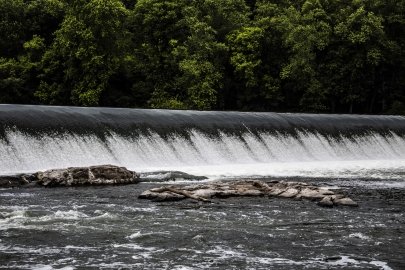 Upstream Tech used machine learning and satellite data to develop more accurate streamflow forecasts that will help hydropower developers and regulators make more informed decisions about future hydropower projects and operations.
Upstream Tech used machine learning and satellite data to develop more accurate streamflow forecasts that will help hydropower developers and regulators make more informed decisions about future hydropower projects and operations. -
 With support from partners, the U.S. Department of Energy’s I AM Hydro Prize awarded $175,000 in cash prizes to 11 teams for their novel concepts to apply new advanced manufacturing techniques for hydropower.
With support from partners, the U.S. Department of Energy’s I AM Hydro Prize awarded $175,000 in cash prizes to 11 teams for their novel concepts to apply new advanced manufacturing techniques for hydropower. -
 To support irrigation districts in upgrading outdated systems, national laboratory researchers developed a tool that provides system designs for districts to understand the benefits of hydropower to decarbonize agriculture.
To support irrigation districts in upgrading outdated systems, national laboratory researchers developed a tool that provides system designs for districts to understand the benefits of hydropower to decarbonize agriculture. -
 Natel Energy conducted fish passage tests with its Restoration Hydropower Turbine and found a 100% survival rate for adult rainbow trout and American eels.
Natel Energy conducted fish passage tests with its Restoration Hydropower Turbine and found a 100% survival rate for adult rainbow trout and American eels. -
 Researchers at ORNL released updated cost estimates for non-powered dam projects in the United States to help save stakeholders time, effort, and money when assessing potential projects.
Researchers at ORNL released updated cost estimates for non-powered dam projects in the United States to help save stakeholders time, effort, and money when assessing potential projects. -
 Two teams win the Groundbreaking Hydro Prize for developing cutting-edge concepts to lower costs and development timelines associated with building foundations for new hydropower projects.
Two teams win the Groundbreaking Hydro Prize for developing cutting-edge concepts to lower costs and development timelines associated with building foundations for new hydropower projects. -
 The Integrated Water Power Resilience Project, a collaborative effort between two national laboratories, led to the development of tools and resources that will help researchers create more resilient water power systems.
The Integrated Water Power Resilience Project, a collaborative effort between two national laboratories, led to the development of tools and resources that will help researchers create more resilient water power systems. -
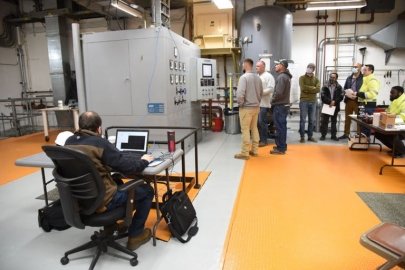 National laboratories and local utility demonstrate how small hydropower and energy storage technologies can provide emergency power to communities during regional grid disruptions.
National laboratories and local utility demonstrate how small hydropower and energy storage technologies can provide emergency power to communities during regional grid disruptions. -
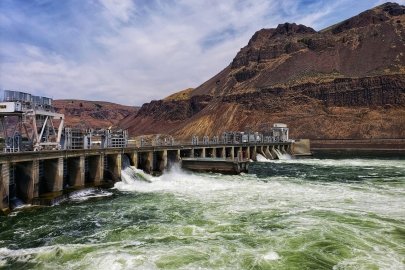 WPTO partners with General Electric to learn how pumped storage hydropower can accelerate the transition to a clean energy economy while helping to reduce local electricity costs.
WPTO partners with General Electric to learn how pumped storage hydropower can accelerate the transition to a clean energy economy while helping to reduce local electricity costs. -
 National laboratory team details approaches and develops a tool for developers and other stakeholders to value a full range of pumped storage hydropower services and contributions to the grid.
National laboratory team details approaches and develops a tool for developers and other stakeholders to value a full range of pumped storage hydropower services and contributions to the grid. -
 Researchers develop a report quantifying hydropower’s contributions to grid resilience and release an accompanying framework and toolkit to allow stakeholders to assess hydropower’s role under various extreme grid conditions.
Researchers develop a report quantifying hydropower’s contributions to grid resilience and release an accompanying framework and toolkit to allow stakeholders to assess hydropower’s role under various extreme grid conditions. -
 Oak Ridge National Laboratory creates a centralized dataset that provides an overview of available resources at hydropower facilities and their energy storage potential.
Oak Ridge National Laboratory creates a centralized dataset that provides an overview of available resources at hydropower facilities and their energy storage potential. -
 National laboratories develop report outlining ways to improve plant models to better represent hydropower’s capability to support the electric grid.
National laboratories develop report outlining ways to improve plant models to better represent hydropower’s capability to support the electric grid. -
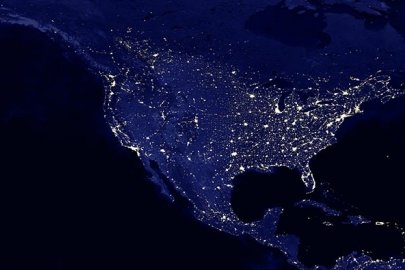 Study reveals how cross-continental integration of large amounts of wind, solar, and hydropower could support a low-carbon future grid and quantifies system benefit of hydropower flexibility.
Study reveals how cross-continental integration of large amounts of wind, solar, and hydropower could support a low-carbon future grid and quantifies system benefit of hydropower flexibility. -
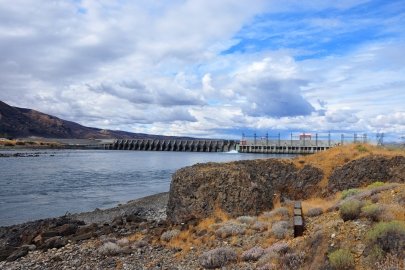 National laboratories contribute to International Energy Agency report on the unique role hydropower plays in service to power systems around the world.
National laboratories contribute to International Energy Agency report on the unique role hydropower plays in service to power systems around the world. -
 Pacific Northwest National Laboratory partners with the International Forum on Pumped Storage Hydropower to develop a series of reports on pumped storage hydropower capabilities, costs, and innovations.
Pacific Northwest National Laboratory partners with the International Forum on Pumped Storage Hydropower to develop a series of reports on pumped storage hydropower capabilities, costs, and innovations. -
 Oak Ridge National Laboratory and Pacific Northwest National Laboratory partner to create the framework for a digital representation of hydropower systems to inform plant operations and decision making.
Oak Ridge National Laboratory and Pacific Northwest National Laboratory partner to create the framework for a digital representation of hydropower systems to inform plant operations and decision making. -
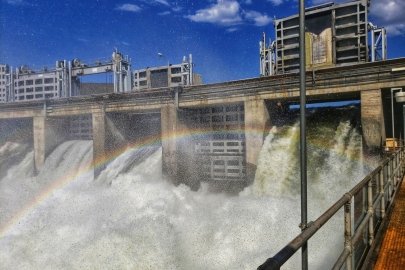 The research team behind the HydroPASSAGE project worked directly with users to enhance the utility of two toolsets and ensure the adoption of tools to support environmental and operational decision making.
The research team behind the HydroPASSAGE project worked directly with users to enhance the utility of two toolsets and ensure the adoption of tools to support environmental and operational decision making. -
 New report evaluates and quantifies factors that affect the time, costs, risks, and uncertainties to license or relicense hydropower projects.
New report evaluates and quantifies factors that affect the time, costs, risks, and uncertainties to license or relicense hydropower projects. -
 The National Renewable Energy Laboratory and several educational nonprofits develop new hydropower curricula and teacher training to help cultivate the next generation of the hydropower workforce.
The National Renewable Energy Laboratory and several educational nonprofits develop new hydropower curricula and teacher training to help cultivate the next generation of the hydropower workforce. -
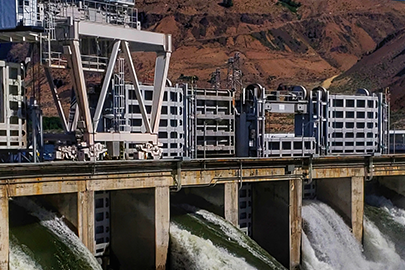 HydroSource, an online platform developed by ORNL to house hydropower data, makes significant improvements and implements new datasets, tools, and other resources for hydropower researchers and decision makers.
HydroSource, an online platform developed by ORNL to house hydropower data, makes significant improvements and implements new datasets, tools, and other resources for hydropower researchers and decision makers. -
 New tool provides environmental and energy stakeholders with a systematic and transparent method for identifying the potential environmental impacts of a hydropower project.
New tool provides environmental and energy stakeholders with a systematic and transparent method for identifying the potential environmental impacts of a hydropower project. -
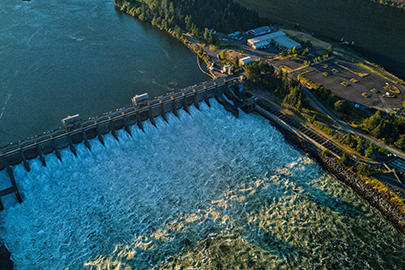 Newly compiled “data stories” from river basins across the United States highlight the importance of accessible and usable water data to inform decision-making processes.
Newly compiled “data stories” from river basins across the United States highlight the importance of accessible and usable water data to inform decision-making processes. -
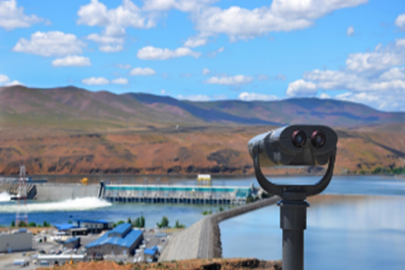 WPTO to provide technical assistance from two national laboratories for Great River Hydro, Idaho Power Company, and Energy Exemplar projects aimed at advancing understanding of how hydropower can most effectively support an evolving power system.
WPTO to provide technical assistance from two national laboratories for Great River Hydro, Idaho Power Company, and Energy Exemplar projects aimed at advancing understanding of how hydropower can most effectively support an evolving power system.
WPTO's Hydropower e-newsletter features news on R&D and applied science to advance sustainable hydropower and pumped-storage technologies.
WPTO's Marine Energy e-newsletter shares news and updates on tools, analysis, and emerging technologies to advance marine energy.
The WPTO e-newsletter brings funding opportunities, events, publications, hydropower, and marine energy updates directly to your inbox.

